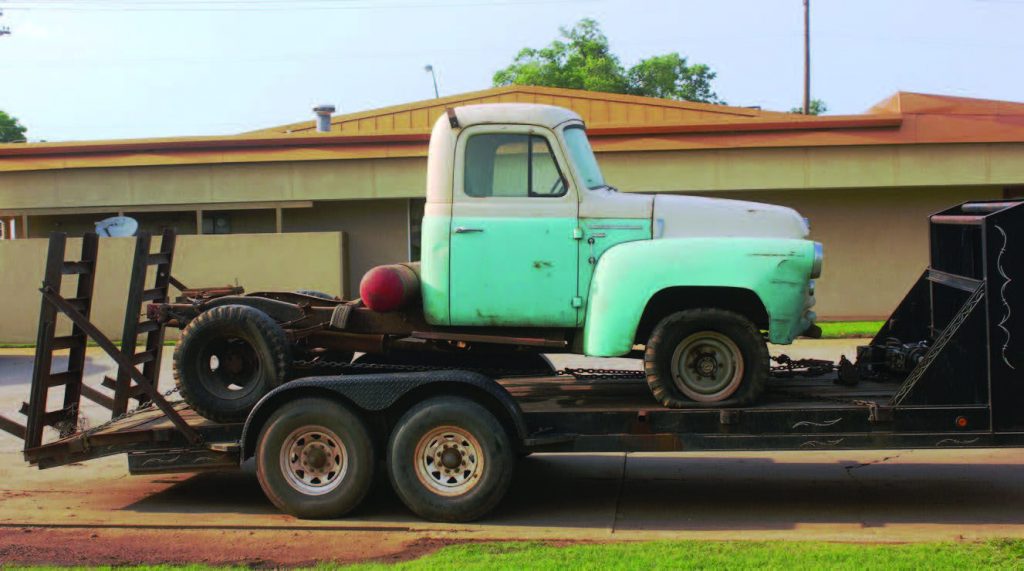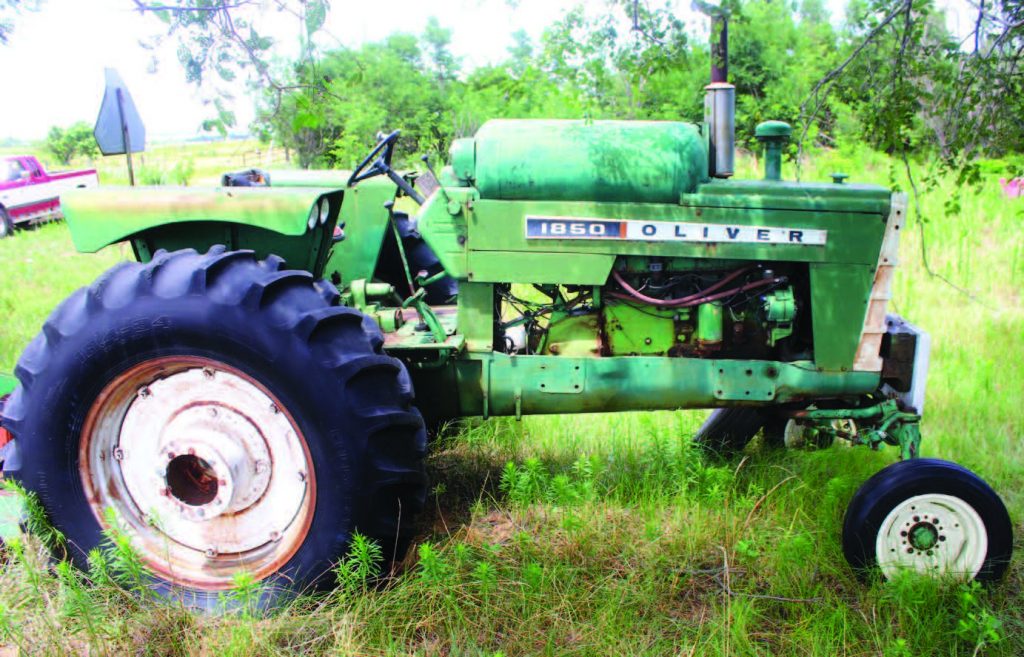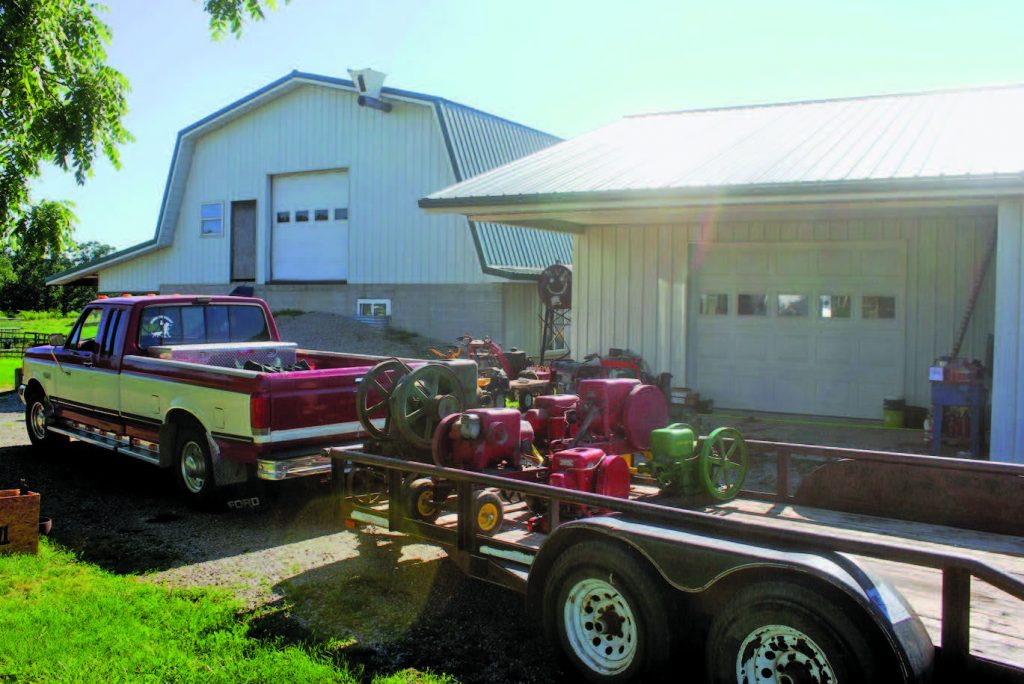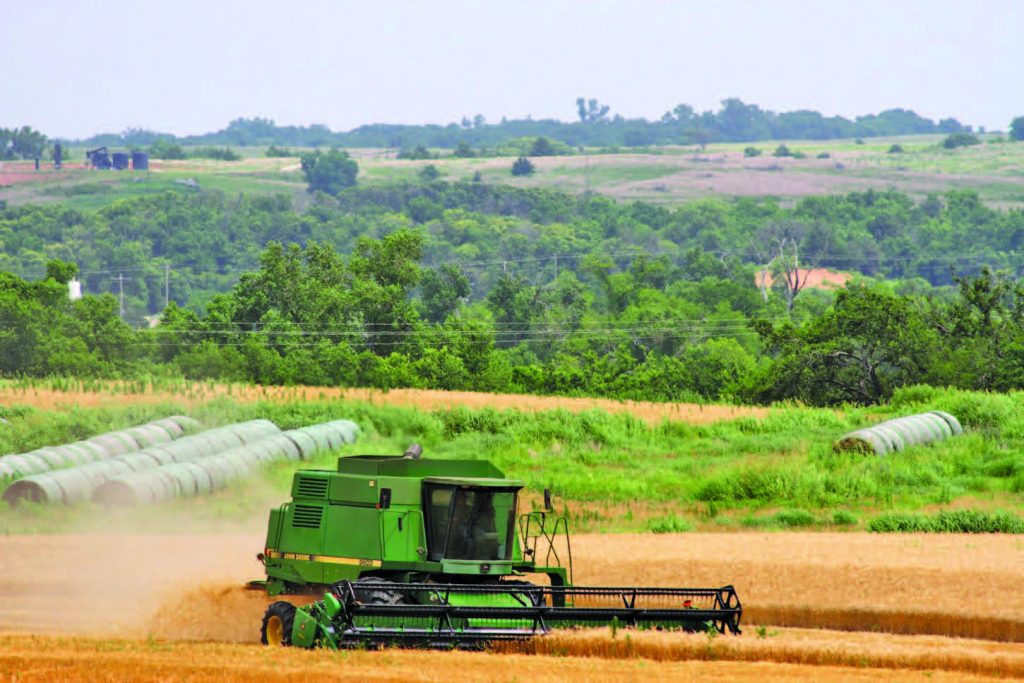I have to start our visit off on a down note. Some of you may remember the article I wrote about Pivonka Implement and the life of Mr. Bud Pivonka of Timken, Kansas. I recently found out that Mr. Pivonka passed away earlier this year at the age of 96. I haven’t been a writer all that long but, so far, the time I spent with Mr. Pivonka ranks up at the top. He was an incredible American.
On a more up note, some good news since our last visit (maybe it was the visit before—I don’t recall), but I told you our local AM radio station had closed up shop. I get a text from Tyler saying it was back on the air, and not only was KALV 1430 back on the air, the station was playing classic country! She has been on my radio dial ever since, spinning some classic vinyl and broadcasting good country music. On Saturday nights, they play the Sock Hop with some great music from the ’40s and ’50s. I can close my eyes and almost make it back in time. This year has been very interesting so far. I think it is one of those years of change. I don’t really like change all that much unless we are talking about the seasons. This year, spring brought us records rains, the wheat harvest was the end of June/first of July when usually it’s the first week of June. By July, we are finished not only with harvest but working/spraying the ground the first time. As I told you last visit, I have always wanted to attend the swap meet at Le Sueur, Minnesota and thought maybe this was my year and I was going to attend the show at Pawnee, Oklahoma, but life threw a wrench into those plans. So I thought I would go to the swap meet at Portland, Indiana, but that didn’t happen either. Those of you who have been spending time with me know I get a bad case of itchy feet when I am stuck at home for long periods of time. I then got my hopes up about going down into Texas and cutting some wheat, but the weather took care of that. So I was feeling a bit blue when my friend called and wanted to know if I would help with harvest at Waukomis, Oklahoma.
Harvest in Waukomis
I landed on the harvest crew of Kurt Simons from Hudson, Colorado again. I always enjoy working with Kurt and his crew. As most of you know, we had abundant rains this spring. The wheat crop really benefited, as you can imagine, but the rains also resulted in some challenges. First you have the mud, which goes without saying, but some of the wheat was lying down and this really made the ol’ combine groan. It also seemed to me that the standing wheat stem was pretty tough. These conditions really worked the combine and it seemed anything that was going to go wrong with the equipment did; I am sure most of you out there can relate to that. So with one combine down for a couple days, I headed back home. I cut for a couple of days and cut some really good wheat but harvest in Waukomis was short for me.
On the harvest trail again
I was home a couple of weeks when I got a call from Kurt wanting to know if I would be interested in cutting wheat at Kinsley, Kansas. I said of course, so I packed my bags again and headed north. The wheat up around Kinsley was about like the wheat around Alva and down at Waukomis. Most of it was really good, a lot of it lying down, but some of it did have some hail damage. The wheat was just as tough to thresh as it was down in Waukomis, but the mud was a bit more of a challenge at Kinsley. I have to admit I got stuck twice. It harkened back to this past fall when I was helping Freddie Lennox pick corn and he nicknamed me Lucky Stucky. Lucky for me that I was not alone in succumbing to the mud, Kurt got stuck a few times and the grain cart driver also needed a couple of tugs to get out. The combines didn’t seem to enjoy the wheat at Kinsley any better than down in Oklahoma and we seemed to battle small breakdowns the entire time I was there, just under a week. It rained some so we had to shut down for a few days so I headed home to take care of cows.


A Missouri adventure
In between wheat cutting jobs, I took a couple of days to get back in the rhythm of things and then headed out on my next little trip. This adventure was set into motion last year, last fall if I remember correctly. I was out west looking at some tractors a guy had when I spotted something that I didn’t think I could live without. While most of you know I am a Ford man, this particular jewel sitting in the barn really took hold. So I asked if it was for sale and he replied it was, so I bought it. The apple of my eye turned out to be a 1956 International S-120 4×4 pickup truck. It was a one owner vehicle that had never been off the ranch. At the time I bought it, I didn’t realize how rare it was, but it turned out that it was a short bed and was equipped with propane from the factory.
So after getting the pickup home, I started looking for some parts for it and found a guy south of Nevada, Missouri that had a collection of International equipment, trucks and lots of IH products. I say “products” because he had it all. Anything International you can think of—pickups, scouts, travelalls, tractors, International motorhomes and even IH freezers. It was a wonderful collection of treasures. I needed some parts from him so when I sold a trailer load of stationary engines to a guy around Mt. Vernon, Missouri, I took the opportunity to stop by and pick up my IH parts.
My friend, Randy Tatro, went along for the ride and we had a great trip. We traveled along the southern edge of Kansas on route 166 all the way across. Here lately when I have had the opportunity to travel, if it is at all possible, I try to take Route 66. On some trips it not feasible but if it is, I really study the map and try and find the Mother Road and drive on it as much as my route allows. There are still some really neat things on the Ol’ Girl. The guy with the IH collection was Dan Agee; we spent the night with him and I learned quite a bit about IH trucks.
One of the most interesting things I took away was the fact that International is still a company and still makes trucks. I know that sounds like I have a vacuum in my melon but I just had never thought about the company still being around. Of course, I had never really given it any thought; in my little brain, International ceased to exist when they merged with Case. But Mr. Agee educated me on that— when the ag part of IH merged with Case, the truck division kept making trucks, but now it is known as Navistar International Corporation instead of the International Harvester Company. What was really fascinating to me is all the different things that IH built or had built with their name on it. It was an amazing visit.
Since my visit with Mr. Agee, I have given the matter a good going over. From what I could come up with, the only two tractor companies that made vehicles were Case and International, with International being far more successful at it. Ford and White, to my knowledge, were automobile and truck builders that ventured into the tractor market, Ford faring a bit better than White. But I just found it interesting. IH really had a good product when it came to their vehicles, including the pickups, Scouts and Travelalls. I think one of the reasons they didn’t survive is that, to my knowledge, they only sold their vehicles through their farm equipment dealerships. You would think that you could spot the flaw in this pretty early. They also offered so many options, like I said, my pickup has factory propane. I know for a tractor that is not a big deal but apparently in vehicles it was a rare option.
A new addition
I know what you’re thinking— another pickup. No, it’s not, it’s a 1965 Oliver 1850 LP. I don’t know if I have actually ever explained what I do for a living, but some of you have probably figured it out that I basically do two things. First, I have a small herd of cows, a very small herd; right now, I am down to 12 cows and a bull. The other thing I do, well, I tell people I hustle a buck; I buy and sell anything that is not bolted down that I can make a buck on. Ninety percent of it is ag related but every once in a while when the ag economy slows down, I have to shift a bit. I spent seven years working for the USDA—NRCS, to be specific. I loved working with farmers but, even though I love this country, I couldn’t handle working for Uncle Sam. So I quit and did odds and ends for about two or three years and then got my teaching certificate so I could teach science and history. I did this for six or seven years, then decided I wanted to do something different.
Now there are a few things that allow me to do what I do for a living; I have never had any kids, my wife works and (this one is probably the most important) we live very modestly. I know you think I have lost my last marble but stick with me here; after I quit teaching and I was trying to figure things out, I got a job as a substitute rural mail carrier. I don’t remember how long I did it but it was long enough to spot this Oliver sitting off the beaten path.
I nosed around and found out who owned it and over the years, I have called and texted him to let him know I was still interested. Once I found myself without his number and I drove to his house and left a note for him. He called me back and over the course of this year I finally got the old girl bought. As of right now, I plan on adding it to my Allis-Chalmers “WD” (Grandpa’s tractor) and my 1956 IHS-120 (named Cal). It’s a pretty nice machine and it should start and run pretty good since it is propane. The man I bought it from said it was his wife’s dad’s tractor. He didn’t know if her dad had bought it new but he owned it for a good many years. When you look at the paint, you can see where the fellow tried to paint it himself. It doesn’t bother me, just adds character.
Colorado or bust
I got a call from Kurt’s dad’s foreman—you might remember him from a couple years back when I cut with Kurt at Waukomis. His name is Louis Le Grange. He asked if I wanted to come up to Hudson, Colorado and help cut wheat for Kurt’s dad when it was ready. I said yes, of course; if it works out, I will tell you all about it at our next visit.
It is hard to believe that we only have four more visits left after this one. I guess we better make the most of them. Wherever you are and whatever you are doing, I hope everybody is enjoying a peaceful life and until we visit again, remember to take time out of your busy schedule and enjoy your part of the world.






